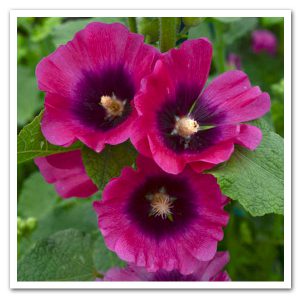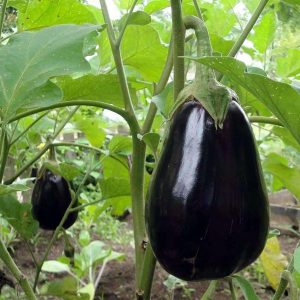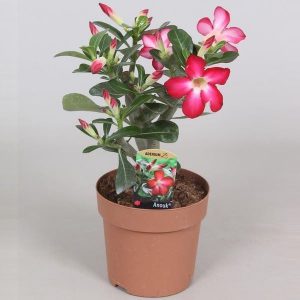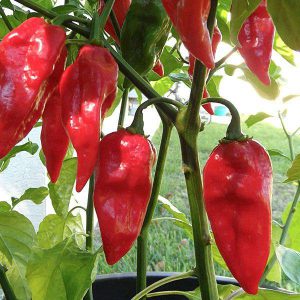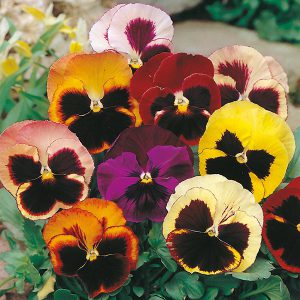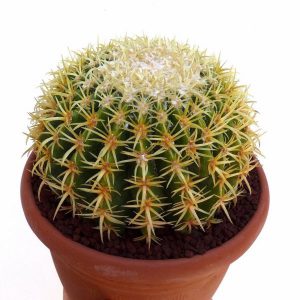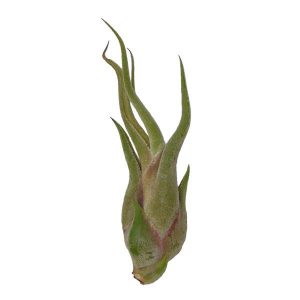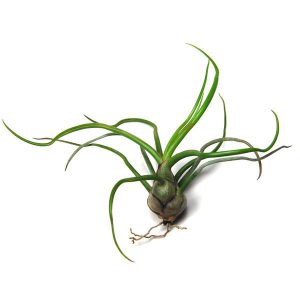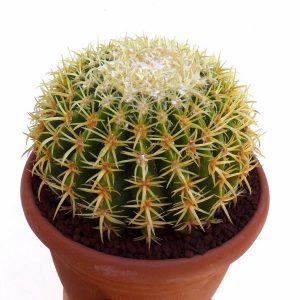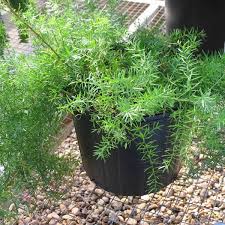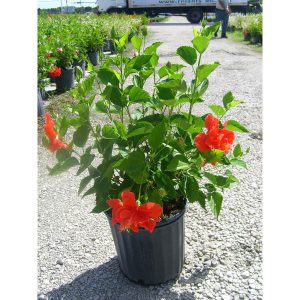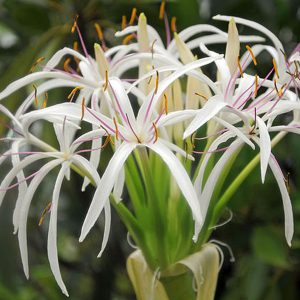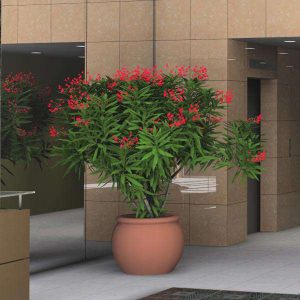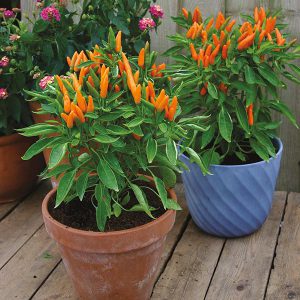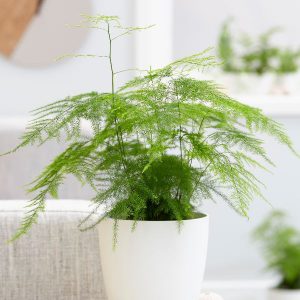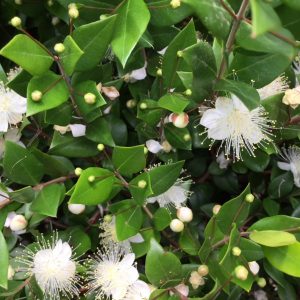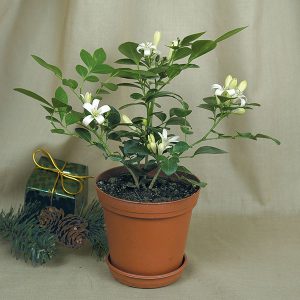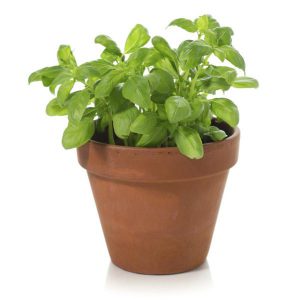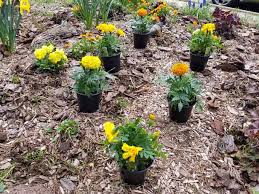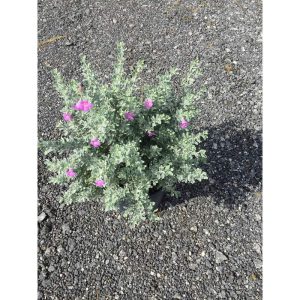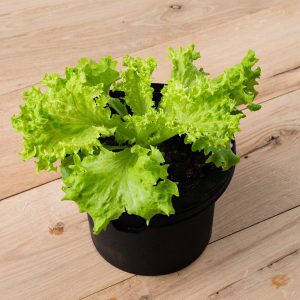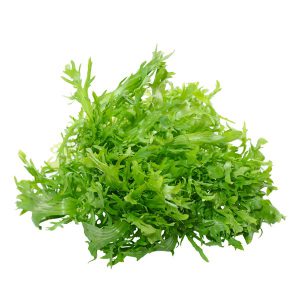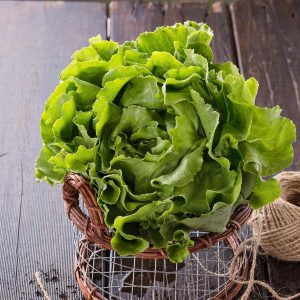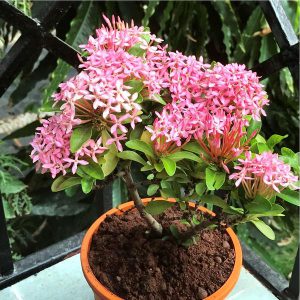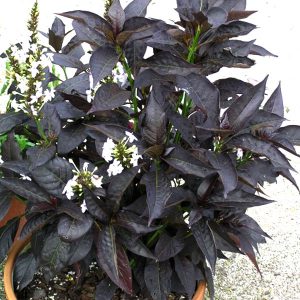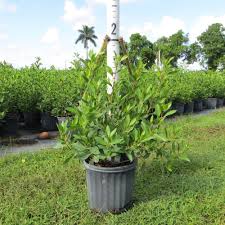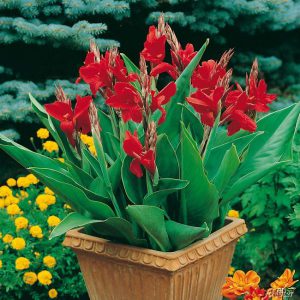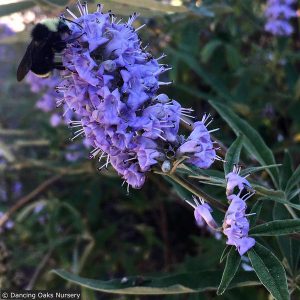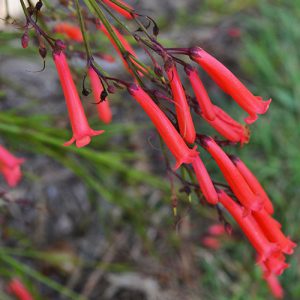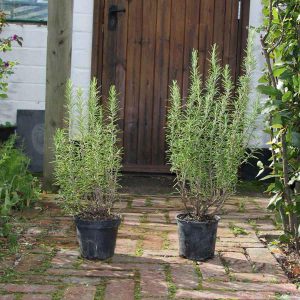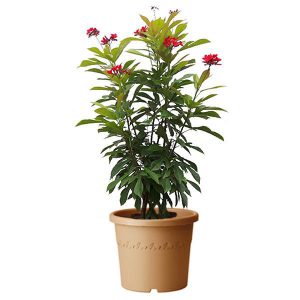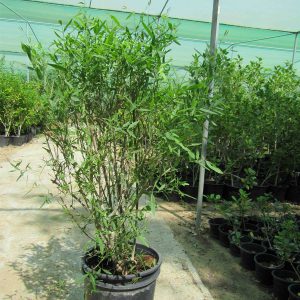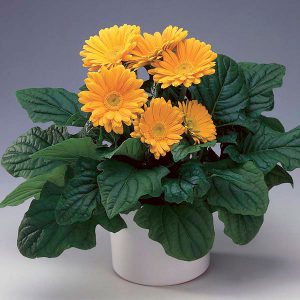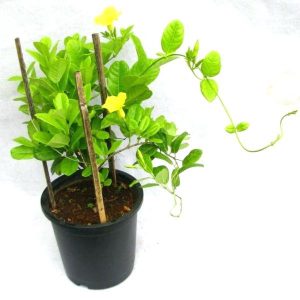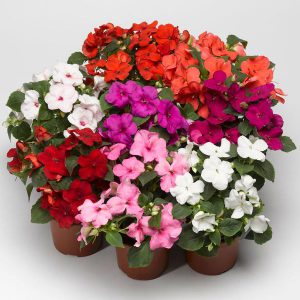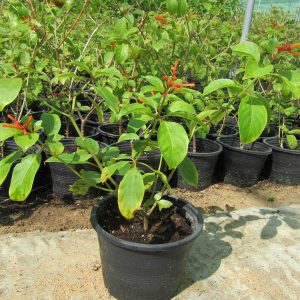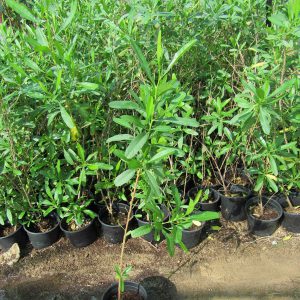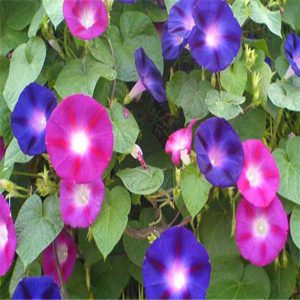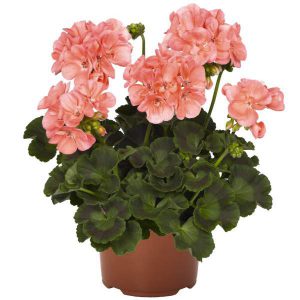Outdoor Plants
Hollyhocks plants
The flowering stalks of the hollyhock, Alcea rosea, are covered in buds from the top all the way down to the rosette of foliage at the base. Once they are fully grown and ready to burst into color, these blooms start at the bottom and slowly work their way up, unfurling a little at a time. As the blooms continue to open, there will typically be several blooms per stalk all opening at once to create beautiful columns of rainbow-worthy color.
AED 45.00Add to cart
egg plant
The range of sizes, shapes, and colors of the heat-loving eggplant (Solanum melongena) tells the story of its enduring popularity. Native to India, where it grows wild, it has been cultivated in Southeast Asia for thousands of years.
Europe was introduced to the vegetable in the 8th century via the Moors, who brought it to Spain, Sicily, and southern France via North Africa. In the sunny, dry climate of the Mediterranean basin, eggplant found the warm growing conditions it prefers and soon found its way into the classic cuisines of the region.
AED 45.00Add to cart
Deseret rose
Plant lovers are always looking for easy to grow, unique plants with a fun aspect. Adenium desert rose plants are perfect specimens for the intrepid or novice gardener. These East African and Arabian natives are wonderful in the interior container garden or as warm climate additions to the patio display. Caring for desert rose plants requires a full sun location and well-drained soil. Properly mimicking their native regional conditions will garner plenty of rose-like blooms on an architectural marvel of a plan
AED 45.00Add to cart
Widi chilli (capsicum annuum)
Sweet Peppers – Different varieties of sweet pepper grow to reach different sizes, look out for those labelled ‘dwarf’ or ‘compact’ plants, which are bushy and grow to around 25cm tall. Non dwarf varieties can grow to between 60 and 100cm tall. The fruit of sweet peppers vary in shape, size and colour from variety to variety, shapes include conical, square and bonnet-shaped, and colours include green, yellow, orange, purple and white.
AED 40.00Add to cart
Pansy
Pansies are the colorful flowers with “faces.” A cool-weather favorite, pansies are great for both spring and fall gardens! Here’s how to keep your pansies growing and blooming.
Pansies have heart-shaped, overlapping petals and one of the widest ranges of bright, pretty colors and patterns.
Good for containers, borders, and as ground cover they are a go-to flower for reliable color in almost three seasons (except hot summers).
AED 40.00Read more
Echino cactus Grusonil
Echinocactus grusonii, commonly known as mother-in-law’s cushion, stands out especially due to its golden spines, which form a beautiful contrast to the lush green of the cactus’ body. In addition, this cactus species is exceptionally robust and does not come with many requirements in terms of tending. Learn from these professional care instructions what exactly it is that your cactus needs.
AED 40.00Add to cart
Tillandsia caput – medusae (Air plant)
Anyone who dares to adapt to its unconventional attitude, will easily meet the few requirements of this tillandsia, even as a debutant to hobby gardening. This care guide explains practically all the relevant details from the ideal location to the correct way of tying up, watering properly, fertilizing, overwintering and propagating.
Its distinctive characteristics include the fact that a Tillandsia caput-medusae acts as an ant plant in the wild. This does not mean that ants support its propagation by transporting seeds. In point of fact, the Tillandsia establishes a symbiotic cohabitation with ants by offering them a place of retreat. In return, the insects make a contribution to care by repelling pests and providing a natural fertilizer by the means of their faces.
AED 40.00Read more
Tillandsia bulbosana – (Air plant )
The Tillandsia Bulbosa is also one of the easiest air plants to care for. It does not require any soakings, only mistings 2-3 times a week, more often in hot and dry conditions like that of in the desert. In the summer months, when it is a bit warmer, the Bulbosa can grow quite rapidly.
It also does extremely well in low light conditions as well as that of bright diffused or indirect light
The Tillandsia Bulbosa is native to Guatemala, Belize and Central America.
Perfectly paired with Himmeli: The DimonThed and The Heart, and with all of the Wall Sconces.
AED 40.00Read more
Golden Barrel Cactus
Echinocactus grusonii, popularly known as the golden barrel cactus, golden ball or mother-in-law’s cushion, is a well known species of cactus, and is endemic to east-central Mexico
- Keep your cactus at low to moderate temperatures averaging between 50 and 75℉ during the day. …
- The golden barrel cactus grows best when given plenty of sunlight. …
- During warm months, you should water your golden barrel cactus on a regular basis whenever you start to notice the soil drying out.
AED 40.00Add to cart
asparagus fern
Asparagus aethiopicus, Sprenger’s asparagus, is a plant native to the Cape Provinces and the Northern Provinces of South Africa. Often used as an ornamental plant, it is considered an invasive weed in many locations
AED 40.00Add to cart
Hibiscus
Select a site with full sun and well-drained soil. Hibiscus also adapt well to growing in containers.
Plant in spring, summer, or fall, spacing plants 3 to 6 feet apart. Dig a hole only as deep as the root ball and 2 to 3 times as wide. If your soil is in very poor condition, amend the soil you’ve removed from the hole with a small amount of compost. Otherwise don’t amend it at all. Carefully remove the plant from the container and set it in the hole. Fill the hole half full with soil, then water it well to settle the soil and eliminate air pockets. Let the water drain, then fill the remainder of hole with soil and water thoroughly.
Hibiscus require at least 1 inch of rain (or equivalent watering) each week. They like to be constantly moist, but not wet. Feed twice a month during the growing season and prune as necessary to control plant size and cut back errant branches. Cut branches back to just above a side shoot. Hibiscus are sensitive to cold and should be protected when temperatures dip into the 30s; container-grown plants should be brought indoors
AED 35.00Add to cart
Spider Lily – Crinum Asiaticum
- Botanical Name: Crinum asiaticum (syn: Crinum amabile)
- Common Name: Giant Crinum Lily, Grand Crinum Lily, Spider Lily, Asiatic Poison Bulb, Poison Bulb, Poison Lily, Seashore Lily, Bakong (in Malay)
- Family name: Amaryllidaceae (Onion Family)
- Etymology: The genus name Crinum originates from the Greek, Krinon, which means white lily, referring to the white or whitish flowers which most species produce
- Origin: Indian and Western Pacific Ocean coastlines (Tropical Indo-Pacific)
- Plant type: Ornamental flowering bulbous perennial herb
AED 30.00Add to cart
outlander (nerium oleander)
Nerium oleander, commonly known as oleander, is a highly toxic plant that has been cultivated since ancient times.
Nerium oleander is a highly toxic ornamental shrub widely cultivated in the Mediterranean. It has been grown since ancient times and features in many of the Roman wall paintings in Pompeii.
Alexander the Great in his military campaigns is said to have lost men as a result of eating meat skewered on highly poisonous Nerium twigs.
AED 30.00Add to cart
Chilli Pepper
Colorful, compact plants that grow to heights and widths of about 12 inches, ornamental chili peppers (Capsicum annuum), produce masses of small, upright peppers that start out green, eventually turning chartreuse, orange, and finally rich, bright red. A single plant often produces more than 50 chili peppers at a time. Although ornamental chili peppers are tropical plants most often grown indoors
AED 30.00Add to cart
asparagus setaceus
Asparagus setaceus, commonly known as common asparagus fern, lace fern, climbing asparagus, or ferny asparagus, is a climbing plant in the genus Asparagus. Despite its common name, the plant is not a true fern, but has leaves that resemble one
The fern may dry out to the point it appears dead; however, outdoor springtime temperatures generally revive them. Keep the plant well watered in all situations and repot every few years. Care ofasparagus ferns indoors involves misting the arching stems to provide humidity to the plant.
AED 28.00Add to cart
myrtus communis
Myrtus communis is one of the most familiar and distinctive evergreen shrubs of wooded and scrub habitats in the Mediterranean region. The fragrant and aromatic, shiny green leaves, which are rich in volatile oils, contribute to the characteristic scents of these habitats. The plants produce abundant, solitary, white flowers during the long, hot Mediterranean summer. The fruits are blue-black, spherical, multi-seeded berries, which are bird dispersed; yellowish-white-fruited forms are also rarely found. Myrtus is the only European genus of the large tropical and subtropical family Myrtaceae, which includes other familiar plants such as a cloves, allspice and eucalyptus.
The range of Myrtus communis extends from Macaronesia through western Asia to Central Asia and northern India. In addition to Myrtus communis, the genus comprises at least one other species; Myrtus nivellei, is a species restricted to the mountains of the Sahara. Molecular data reveal distinct genetic differences between the eastern and western parts of the range of Myrtus communis which can be dated to events about 5-8 million years ago, followed by later colonisation of the Sahara.
AED 25.00Read more
murraya pancucata
This lovely plant is a compact evergreen shrub with oval, shiny, deep green leaves that can get up to 2 3/4 inches long, extending from interesting, gnarled branches. At maturity, this plant will be 8 to 12 feet tall and wide, creating a large, round shrub.
Clusters of small, fragrant flowers bloom in spring, followed by bright reddish-orange berries in summer. The flowers are very fragrant and smell like orange blossoms and flowering will occur year-round. The fruit is 1/2 to 1 inch long and red. It is prized by birds.
AED 25.00Add to cart
Tulsai Basil
It is important to pinch tops of Tulasi plant when they are forming four or six pairs of leaves, this will make the plant grow bushier. Even the flower buds need to be removed when they appear. It grows more lush and full when seed production is prevented.
It is also important to remove the faded, wilted or discolored leaves to encourage the growth of new foliage. Regular removal of old leaves and flower buds keep the plant healthy.
AED 25.00Add to cart
Marrigold
- Marigolds are a favorite, no-fuss annual that can bring the color of sunshine to your garden, as well as butterflies, bees, ladybugs, and other beneficial insects. Give them full sun and some well-draining soil and watch them bloom from late spring until fall.
- Marigold plants germinate quickly, within just a few days, and bloom in about 8 weeks. This quick sense of satisfaction makes them a great first-time gardening project for kids and garden newbies. Not to mention, marigolds are a great companion in your vegetable garden and can help protect your veggies from predators and pests.
- It is best to water marigolds at the base of the plant and not from overhead. The densely double flowerheads will tend to rot with excess moisture. Allow the soil to dry somewhat between waterings, but do water regularly in high heat or dry weather. Marigolds growing in containers should be watered daily as containers dry out quickly.
AED 25.00Add to cart
leucophyllium
Tips
- The height of a Texas sage bush depends on its environment. It stays compact and short, up to about 5 feet tall, in arid conditions. Plants tend to grow more than 8 feet tall in gardens where they receive water that supplements rainfall.
- Compact Texas sage varieties are good for large containers. Shorter cultivars include “Compacta,” which has pink flowers.
AED 25.00Add to cart
lettucc lollo green
Lollo Bionda (pale green) and Lollo Rosso (red) are terms used referring to types of fancy lettuce with tight curly leaves, otherwise known as coral lettuce. The leaves are produced loosely in a whole head, are tender in taste, with a slight bitterness.
These very decorative lettuce types add a punch of colour, texture and volume to salads. The curled leaves also have a practical function as they increase the surface area enabling salad dressings to be caught up in the leaf and not to the bottom of your salad bowl.
Recently breeders have selected varieties with smaller leaves that easily separate with just one cut at the base and have become very popular in ready to eat leafy salad mixes.
AED 25.00Add to cart
lettucc frisee (organic)
A type of frisee endive with very fine, branched leaves. Frisee Organic Chicory Seeds produce a frisee endive variety that is tolerant to necrosis, and is known for its early development of compact heads. With excellent flavour and its heavy weight, this is an outstanding market variety for whole head or baby leaf production. Plants can be blanched by bunching the outer leaves together at the top with an elastic band, or by placing a cardboard disc over the plants before harvest. Blanched endive is a bit sweeter, and even sweeter when lightly cooked.
AED 25.00Add to cart
lettucc boston (organic)
Succession planting is the key to growing lettuce if you want a steady supply of lettuce for salads and sandwiches. From spring through fall, Thomas Jefferson planted a teaspoon of lettuce seeds every Monday at Monticello, so they’d have lettuce all summer long.
For home gardeners, planting a small patch where you have a gap in the garden every 2-3 weeks will give you a steady supply through the summer. Container gardeners or balcony farmers can start new salad trays or planters every few weeks.
AED 25.00Add to cart
Ixora plant
The best floral displays are produced by Ixora grown in full sun situations. Well-drained soil and moderate to slightly acidic pH are crucial to growing an Ixora bush. The plant develops chlorosis when installed in alkaline soils. Keep the soil evenly moist and prune the plant when it gets unruly. Ixora responds well to shearing and makes an excellent low hedge with its 4 to 6 foot height. Propagation of the shrub is through stem cuttings which can be rooted with the help of a rooting hormone. The flowers also occasionally produce a dark purple to black berry with seeds that are sometimes viable. Clean the pulp off the seed and soak it over night. Plant in a 2-inch pot filled with good seed starter mix. Moisten the mixture and fasten a plastic bag over the pot. Place in a warm location with moderate light. Keep the pot moist and move it to bright light as soon as the seed has germinated.
AED 25.00Add to cart
eranthemum nigrum black kodia plant
The Eranthemum nigrum is also known as Black Kodia.
The subtropical climate is said to be the best for the growth of the plant.
The plant is grown widely as an ornamental plant.
The special feature of the plant is that it can grow anywhere. It has no specific requirements or conditions for growth.
The plant produces attractive white flowers from summer to fall.
AED 25.00Add to cart
conocarpus (damas)
There are many reasons why this is one of the most widely planted landscape trees and shrubs in the UAE. Fast-growing and tolerant of heat, drought and salt, it makes an excellent large landscape tree, or a screen or windbreak when planted as a hedge.
Often used as a pioneer species in soil stabilisation or reforestation projects, Damas has also proved effective in cleaning oil-contaminated soils and in absorbing heavy metals and minerals through its extensive, fibrous root system. Not only is Damas’s dense wood suitable for charcoal and young foliage for fodder, but it also has the appearance of a water-hungry exotic species. In fact, it is native to Somalia, East Africa and the Arabian Peninsula and requires relatively little irrigation.
AED 25.00Add to cart
canna lily (canna indica purpurea)
- Cannas do best with a good supply of water, so water the plants during the summer if the rainfall is less than 1 inch per week. …
- Keep a thin layer of mulch around cannas to help retain moisture as well.
- Stake tall varieties if needed.
- As flowers fade, deadhead to promote continued flowering.
AED 25.00Add to cart
Vitex Anus (chaste tree)
Vitex (chaste tree, Vitex agnus-castus) blooms from late spring until early fall with long, upright spikes of pink, lilac and white flowers. Any shrub or tree that blooms all summer is well worth planting, but when it also has pleasantly fragrant flowers and foliage, it becomes a must-have plant. Chaste tree garden care is easy, but there are a few care essentials you need to know to get the most from this outstanding plant
AED 20.00Add to cart
Russellia equisetiforms (fire caricker plant)
Light: Bright light to full sun. Firecracker plants require lots of light to bloom. Move it outdoors for the summer and set it in the sunniest spot you can provide.
Water: Water thoroughly, allowing the top of the soil to dry out between waterings. Mature plants are drought-tolerant, so it’s a good idea to keep them on the dry side.
verage room temperatures 65-75°F/18-24°C. If you move your plant outside for the warm months, don’t worry — it can take the heat. It’s hardy in USDA Zones 9b-11. It won’t tolerate freezing temperatures.
AED 20.00Add to cart
Rosemary
Growing rosemary indoors is sometimes a tricky thing to do. Many good gardeners have tried, and despite their best efforts, end up with a dry, brown, dead rosemary plant. If you know the secrets to proper care of rosemary plants growing inside, you can keep your rosemary plants growing happily indoors all winter long.
AED 20.00Add to cart
Peregrina jatropha
The drought, which started in April and ran through June, created a heavy flowering of oleander, hibiscus, lantana, pentas and other species.
It was, however, interesting to note that many of them were late in leafing up and flowering.
From a design principle, too heavy a massing of one species can create a real statement when in full bloom, but once the flowering is over little of interest is observed. This is especially the case with pentas and lantana which, in my opinion, are the dominant colour palettes for ground cover plants from spring to autumn.
As soon as flowering has ended, pruning should be immediately carried out to encourage new growth and, of course, another burst of flower. A good fertilising with a coated fertiliser which can be supplemented with a liquid feed should be applied. Do not apply granular fertiliser when soil is dry or temperature over 75 degrees.
AED 20.00Add to cart
Miswak (salvadora persica)
Therapeutic Uses
- The root contains steam-distillable oil, which has 90% Benzyl isothiocyanate, a compound responsible for decreasing dental caries and used in the preparation of Meswak toothpaste.
- The chemical present in the plant can control gingivostomatitis, skin infection and conjunctiva.
- The root bark is tonic, stimulant, emmenagogue. The stem bark is good for gastropathy.
Source: Agro-techniques of selected medicinal plants
AED 20.00Add to cart
Gerbera daisy
Gerbera daisies are susceptible to fungal diseases, although older varieties less so. Fungal sprays do not generally prevent crown rot, so correct planting and watering are essential for gerbera daisy care. Make sure you plant them with adequate spacing and in high light areas. A little bit of light shade in high summer is alright, but without full, direct light the plants will get leggy and pale and not produce nearly as many blooms. Water in the morning so leaves can dry out during the day to lessen the risk of rot and fungal diseases. Gerbera daisy care can also be enhanced by using a micro-nutrient liquid fertilizer such as a seaweed or fish emulsion. Keep an eye out for caterpillars and leaf miners too. Spray, if needed, with an organic spray such as pyrethrum or neem oil. Growing gerbera daisies can have some challenges, but it is a wonderful reward when those big, happy flowers bloom.
AED 20.00Add to cart
Alamanda cathartica
alamanda cathartica Growth Form: A woody and evergreen vine. It can grow up to 6 m in height. Foliage: The leaves are borne in
AED 20.00Add to cart
impatiens
Impatiens is one of the most popular annual flowers, due to their brightly color blooms and their ability to grow in shady areas. The most commonly grown cultivars are short plants, attaining a height of not more than 1 foot. Some types, such as the ‘Super Elfin’ series, stay much shorter. Impatiens flowers come in a variety of colors, including white, red, pink, violet, coral, purple, and (a relative newcomer) yellow.
AED 15.00Read more
hamelia patens
Light: Does best in full sun but quite well in partial shade. It becomes leggy in shade.Moisture: Once established, firebush is drought tolerant, but it does best with frequent watering as long as the soil has excellent drainage. Water weekly during the first year after transplanting.Hardiness: USDA Zones 8 – 11. Firebush is like coral bean: it is a semi-woody shrub or small tree in zones 10-11, and a perennial that dies to the ground in winter and sprouts back in spring in zones 8-9. Firebush also is grown as an annual or a potted plant in colder zones.Propagation: Propagate by soft wood cuttings in spring or by seed.
Hamelia patens is an evergreen shrub, usually growing 1.8 – 3 metres tall, though sometimes becoming a tree up to 5 metres tall with a short bole around 8cm in diameter[
AED 15.00Add to cart
Dodonaea viscosa green
The hop bush has an excellent, natural shape and seldom requires pruning. Only prune hop bush to reduce its size or to remove dead or damaged foliage in the spring. Water deeply once a month in the summer, and rely on rainfall in the winter.
AED 15.00Add to cart
Moringa glory (ipomoea)
- Moringa oleifera (Moringaceae) is a tree native to India, and cultivated in tropical areas of the world.
- It is considered the “miracle tree”, because all its parts (leaves, flowers, fruits, wood and seeds) are used mainly for their pharmacological and nutritional properties.
- The crushed seeds are known for their very high capacity to purify drinking water.
- The leaves of the tree are so nutrient dense they are an integral part of the WHO and FAO programs for feeding the poor in indigent countries.
- In Ayurveda the moringa tree and its parts are used to treat over 300 ailments.
AED 10.00Add to cart
geranium
Whether indoors or out, geranium care is pretty basic. In addition to watering, which should be done deeply and once the soil begins to feel dry indoors or at least weekly outdoors (though potted plants may need daily watering in hot weather), fertilizing is usually necessary. Use a water-soluble houseplant fertilizer or a 5-10-5 fertilizer with additional organic matter every four to six weeks throughout their active growing season. Indoor or potted plants may require repotting once they become overgrown, usually noted by wilting between waterings. Regular deadheading of spent blooms will also help encourage additional blooming. When watering outdoor plants, it’s best to avoid overhead irrigation, as this can lead to pests or disease issues. Geranium plants root easily from cuttings and can be propagated in fall for overwintering of outdoor plants. They can also be dug up and brought inside.
AED 10.00Read more

